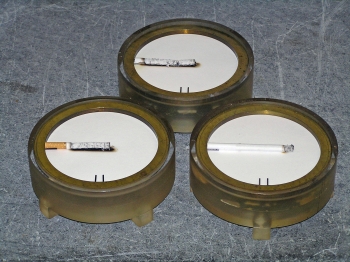Nationwide Adoption of NIST-Developed Test Predicted to Cut Death Toll Due to Cigarette-Caused Fires
In 2003, New York became the first state requiring cigarettes sold within its borders to pass a fire safety standard based on a test developed by the National Institute of Standards and Technology (NIST) to reduce the risk of igniting upholstered furniture and bedding, a major cause of residential fires.
Last year, when Wyoming enacted a law similar to New York’s, a milestone with lifesaving consequences was achieved: all 50 states had made the Standard Test Method for Measuring the Ignition Strength of Cigarettes (ASTM E2187) a regulatory requirement.
A new study projects that, with nationwide adoption, deaths due to fires ignited by cigarettes or other tobacco products will drop 30 percent below the total number of such fatalities in 2003, the last full year before the ASTM E2187 was first implemented in a state. The projected decrease translates into about 200 lives saved annually. More from NIST



